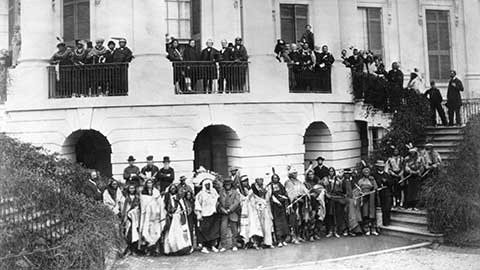Treaty of 1855
The history
The Treaty with the Chippewa, which was signed on February 22, 1855, established the Mille Lacs Reservation as a permanent homeland for the Mille Lacs Band of Ojibwe.
According to the treaty, the Mille Lacs Reservation comprised four fractional townships along the southwestern shore of Mille Lacs Lake: township 43N, range 27; and township 42N, ranges 25, 26 and 27; as well as the three islands in the southern part of the lake. The lands within the reservation comprise about 61,000 acres.
After the Dakota Conflict of 1862, in which Dakota Indians and some Ojibwe threatened and attacked non-Indian settlers in Minnesota, some Ojibwe reservations created in 1855 were ceded to the United States. But in recognition of the Mille Lacs Band’s assistance to the United States during the conflict, an 1863 treaty provided that the Mille Lacs Band could remain on its reservation.
Today
Today more than 2,000 Mille Lacs Band members call the Mille Lacs Reservation home, as well as thousands of others living elsewhere who feel a strong connection to their ancestral lands. Many non-Band members also live within the boundaries of the reservation.
The Band wants to live in harmony with its non-Indian neighbors and believes its efforts to preserve, enhance and develop the economic potential of the reservation benefits all reservation residents.
In 2002, the Mille Lacs County Board of Commissioners filed a federal lawsuit against the Mille Lacs Band regarding the existence of the reservation boundaries. The suit was dismissed by a series of lower courts, and the U.S. Supreme Court refused to hear the case.

